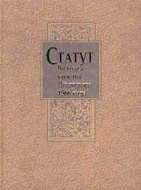A glimpse of the Belarusian parliamentarism

The Belarusian parliamentary system has had a long life, which has been closely linked with the development of the country’s statehood. Belarus has seen almost all types and forms of representative democracy known in Europe. The roots of Belarusian parliamentarism are found in the Veche of Polotsk, the Seims of the Great Lithuanian Principality and Rzeczpospolita as well as in the State Duma of the Russian Empire. Under the Soviet power, the popular will was expressed at Belarusian National Congresses of Soviets, sessions of the Supreme Council of the Belarusian SSR and of the Republic of Belarus. On July 27, 1990 the Supreme Council adopted the “Declaration on the State Sovereignty of the Belarusian Soviet Socialist Republic”. In August 1991 political and economic independence of the country was proclaimed while the Declaration became a constitutional act. During the period Belarus functioned as a parliamentary republic. On March 15, 1994 a new Constitution of the country, which introduced presidency, was adopted. The President of the Republic of Belarus is the head of the State and of the Executive. In keeping with the amendments and addenda introduced to the Republic’s Constitution following a national referendum of November 24, 1996 the legislative power in the country is today ensured by the Parliament — National Assembly of the Republic of Belarus, which comprises two chambers — the Council of the Republic and the House of Representatives.
Important dates
| X — XI centuries. | Tribal popular gatherings on the territory of Belarus were transformed into bodies of territorial government referred to as Veche. |
| XI — XII centuries. | The Veche of Polotsk whose decisions are binding for the population of the Principality becomes the most popular and important assembly. |
| XIII century. | The Great Lithuanian Principality is established. |
| XV century. | The emergence of aristocracy and bourgeoisie gives rise to the formation of bodies representing social classes known as Seims. |
| September 29, 1529. | The Statute of the Great Lithuanian Principality comes into force. |
| 1566. | An amended version of the Statute of the Great Lithuanian Principality is adopted. |
| 1569. | The Great Lithuanian Principality is united with the Kingdom of Poland into Rzeczpospolita. |
| 1588. | A new version of the Statute of the Great Lithuanian Principality is adopted to endue the Seim with the legislative power, the Great Prince and the Rada — with the executive power, the local courts, the judges of the Great Principality and the chief judge — with the judicial power. |
| 1840. | The Statute of the Great Lithuanian Principality ceases to operate on Belarusian territories and the Russian legislation is introduced. |
| 1906 — 1917. | Representatives of Belarusian provinces participate in the elections to the State Duma of the Russian Empire and work in it. |
| February 3, 1919. | The 1st All-Belarusian Congress of Soviets is held in Minsk. |
| 1920 — 1937. | Eleven All-Belarusian Congresses of Soviets are held during the period, two of them being special. |
| 1937. | A new Constitution of the Belarusian SSR is adopted to provide for a replacement of the All-Belarusian Congress of Soviets with a unicameral parliament — Supreme Council of the Belarusian SSR. |
| June 26, 1938. | The first elections to the Supreme Council take place. |
| 1978. | The 9th special session of the Supreme Council of the ninth convocation adopts a new Constitution of the Belarusian SSR. |
| July 27, 1990. | The Supreme Council adopts the “Declaration on the State Sovereignty of the Belarusian Soviet Socialist Republic” |
| July 13, 1991. | The law “On the Popular Vote (referendum) in the Belarusian SSR” is adopted. |
| March 15, 1994. | The Supreme Council of the Republic of Belarus adopts a new Constitution introducing presidency in the country. |
| November 24, 1996. | A national referendum on amending the country’s Constitution to introduce a bicameral parliament — the National Assembly of the Republic of Belarus, which would consist of the Council of the Republic and the House of Representatives is held. |
| January 13, 1997. | The 1st session of the National Assembly Council of the Republic of the first convocation is opened. |
| December 19, 2000. | The 1st session of the National Assembly Council of the Republic of the second convocation is opened. |
| November 10, 2004. | The 1st session of the National Assembly Council of the Republic of the third convocation is opened. |
| October 31, 2008. | The 1st session of the National Assembly Council of the Republic of the fourth convocation is opened. |
| October 19, 2012. | The 1st session of the National Assembly Council of the Republic of the fifth convocation is opened. |
| October 12, 2016 | The 1st session of the National Assembly Council of the Republic of the sixth convocation is opened. |
 Contacts
Contacts